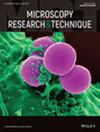Investigation of four nickel titanium endodontic instruments, with cyclic fatigue resistance, scanning electron microscopy, and energy dispersive x-ray spectroscopy
Abstract
The aim of this study was to compare of four different nickel-titanium (Ni-Ti) endodontic files and evaluate in terms of cyclic fatigue resistance and metallurgical properties. Four different type Ni-Ti root canal files Protaper Next X2 (PTN) (Dentsply Maillefer, Ballaigues, Switzerland), One Curve (OC) #25.06 (Micro Mega, Besancon, France), EndoPlus Flex Plus Gold X2 (EPG) (Turkuaz Dental, Denizli, Turkey), and EndoPlus Flex Plus Blue #25.06 (EPB) (Turkuaz Dental, Denizli, Turkey) files were tested for cyclic fatigue resistance (n = 20). During experiments artificial zirconia block canal was used. The artificial canal designed with curvature 60° and 5-mm radius. The number of cyclic to fracture (NCF) was noted. Fractured length (FL) parts of Ni-Ti files were recorded to assessment of fracture volumetric point. All fractured surfaces of Ni-Ti files were assessed by scanning electron microscope (SEM) to confirm the type of fractures. Descriptive evaluation become accomplished for the fundamental composition of units with the aid of using energy-dispersive x-ray spectroscopy (EDX). NCF data were evaluated via Bonferroni test with post hoc multiple comparison method. OC showed the highest NCF values (p < .05). The standardization of the study was confirmed as the FL of files was statistically similar in length (p > .05). SEM analysis confirmed that all scanned samples were fractured due to cyclic fatigue. EDX analysis confirmed that EPB established the poorest Ni content file.
Research Highlights
- The cyclic fatigue-related failure of One Curve was significantly more resistant than Protaper Next and EndoPlus files.
- Scanning electron microscopy images showed that One Curve and Protaper Next have round tips
- Energy dispersive x-ray spectroscopy showed that all four endodontic instruments mainly have Nickel and Titanium elements



 求助内容:
求助内容: 应助结果提醒方式:
应助结果提醒方式:


